📞+86 153 7530 2641 📧 hongjing.Wang@feichuncables.com
Why Choose (N)TSFLCGEWOEU Flexible Reeling Cable with Data for Port Equipment?
Discover the (N)TSFLCGEWOEU flexible flat rubber reeling cable designed for stackers and reclaimers. Engineered for continuous movement with data transmission capability and compliant with AS/NZS 2802 for Australian port operations.
hongjing.Wang@Feichun
7/16/202511 min read
Introduction
Australia's bustling port infrastructure relies heavily on sophisticated mobile equipment that demands robust, reliable power and data transmission solutions. From the massive container terminals of Sydney and Melbourne to the bulk handling facilities across Western Australia, port reeling cable systems form the backbone of automated machinery operations. These cables must withstand the harsh coastal environment whilst providing uninterrupted power and real-time data communication for critical equipment.
The evolution of port automation has created an urgent need for flexible reeling cable solutions that can handle both power distribution and data transmission simultaneously. Traditional round cables often struggle with the constant winding and unwinding motions required by stackers, reclaimers, and other mobile port equipment. This is where flat rubber reeling cable technology becomes essential, offering superior performance characteristics that align perfectly with Australian port operational requirements.
The AS/NZS 2802 standard serves as the cornerstone for cable specifications in Australian port environments, ensuring that all electrical installations meet stringent safety and performance criteria. This standard is particularly crucial for movable equipment cables, where reliability can mean the difference between smooth operations and costly downtime that affects entire supply chains.


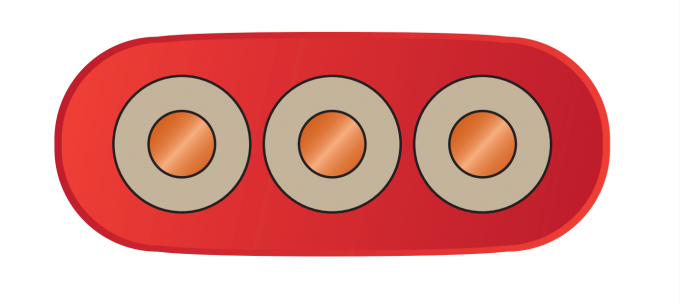

What is the (N)TSFLCGEWOEU Cable?
The Type (N)TSFLCGEWOEU Flexible Flat Rubber Reeling Cable with Integrated Data Transmission represents a significant advancement in port equipment cable technology. This specialised cable system has been engineered specifically for reeling and long-travel applications, making it the ideal choice for mobile equipment in Australian ports.
Unlike conventional round cables, the (N)TSFLCGEWOEU reeling cable features a flat configuration that dramatically improves winding performance whilst reducing cable torsion stress. This design innovation is particularly beneficial for stacker reclaimer cable applications, where equipment must traverse considerable distances whilst maintaining continuous power and data connectivity.
The cable's designation reflects its comprehensive capability to handle multiple functions simultaneously. The integrated data transmission elements work alongside traditional power and control cores, creating a unified solution that simplifies installation and maintenance procedures. This is especially valuable in port automation systems where real-time data connectivity is essential for operational efficiency.
Port operators across Australia have increasingly recognised the importance of choosing cables that can withstand the unique challenges of coastal environments. The (N)TSFLCGEWOEU cable addresses these concerns through its robust construction and compliance with local standards, making it suitable for everything from container handling equipment to bulk material processing systems.
Key Features and Construction
The (N)TSFLCGEWOEU cable boasts a sophisticated construction that delivers exceptional performance across all operational parameters. With a voltage rating of 0.6/1kV, this port equipment cable is designed to handle the electrical demands of modern port machinery whilst maintaining safety margins that exceed industry requirements.
The conductor system utilises fine stranded bare copper Class 5 construction, ensuring optimal flexibility and conductivity. This specification is particularly important for reeling cable Australia applications, where repeated bending cycles demand conductors that can maintain their integrity over extended service periods. The copper stranding provides excellent electrical performance whilst resisting fatigue from constant movement.
EPR (Ethylene Propylene Rubber) insulation forms the primary protective layer around each conductor. This material choice reflects the cable's intended use in challenging environments, offering superior resistance to heat, ozone, and chemical exposure. The EPR insulation maintains its dielectric properties across the full operating temperature range, ensuring consistent performance regardless of environmental conditions.
The cable's core arrangement represents a carefully engineered balance between power delivery and data transmission capabilities. Three power cores handle the primary electrical supply, whilst three control cores manage equipment functions and safety systems. The inclusion of two dedicated data transmission elements sets this cable apart from conventional solutions, enabling real-time communication between mobile equipment and control systems.
The heavy-duty rubber sheath, typically manufactured from PCP (Polychloroprene) or equivalent materials, provides the ultimate protection against environmental hazards. This outer covering is specifically formulated to resist oil, UV radiation, and mechanical damage whilst maintaining the flexibility essential for reeling applications. The flat configuration of the sheath contributes significantly to the cable's superior winding characteristics compared to traditional round designs.
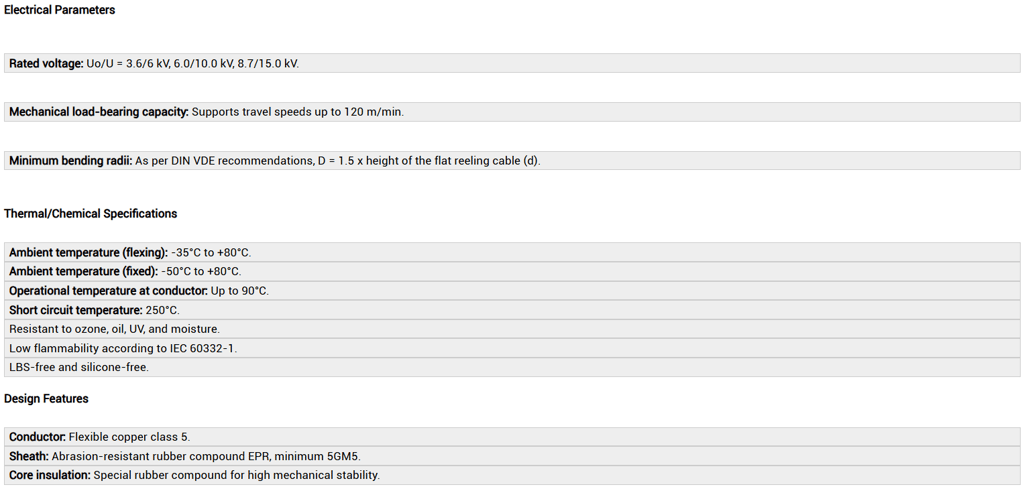

Mechanical and Environmental Performance
Australian port environments present unique challenges that demand exceptional cable performance across multiple parameters. The (N)TSFLCGEWOEU cable's operating temperature range of -25°C to +90°C ensures reliable operation throughout Australia's diverse climate zones, from tropical northern ports to temperate southern facilities.
Flame retardant properties, tested to IEC standards, provide crucial safety features for port installations. This characteristic is particularly important in environments where flammable materials and electrical equipment coexist. The cable's ability to limit flame propagation helps protect both personnel and equipment whilst maintaining operational continuity during emergency situations.
The flat rubber reeling cable construction delivers superior resistance to oil, UV radiation, and ozone exposure. These environmental factors are constantly present in port environments, making material resistance essential for long-term reliability. The cable's formulation specifically addresses the accelerated aging effects of coastal atmospheres, ensuring consistent performance throughout its operational lifetime.
Bending radius specifications align with reeling cable application standards, allowing for tight winding configurations without compromising cable integrity. This characteristic is crucial for stacker and reclaimer applications where space constraints often dictate minimum bend radii. The flat design inherently provides better bending characteristics compared to equivalent round cables, reducing stress concentrations that could lead to premature failure.
The cable's suitability for medium to long-travel reeling systems makes it ideal for the extended operational ranges typical of modern port equipment. Whether supporting ship loaders that traverse entire berths or stackers that cover extensive storage areas, the (N)TSFLCGEWOEU cable maintains reliable performance across distances that would challenge conventional cable solutions.
Compliance with Australian Standards
The AS/NZS 2802 compliant reeling cable for ports designation ensures that the (N)TSFLCGEWOEU cable meets all requirements for electric cables used in mining and general industrial applications. This standard is particularly relevant for port installations, where equipment operates under conditions similar to those encountered in mining environments.
Compliance with AS/NZS 2802 provides port operators with confidence that their cable installations will meet Australian regulatory requirements whilst delivering the performance characteristics demanded by modern automated systems. The standard addresses critical factors including conductor sizing, insulation performance, sheath integrity, and environmental resistance.
The certification process involves rigorous testing across multiple parameters, ensuring that every aspect of cable performance meets or exceeds specified requirements. This comprehensive approach provides assurance that the cable will perform reliably in the demanding environment of Australian port operations, where equipment downtime can have significant economic consequences.
Port-side mobile equipment installations benefit significantly from the safety and reliability assurances provided by AS/NZS 2802 compliance. The standard's emphasis on durability and environmental resistance aligns perfectly with the operational requirements of stackers, reclaimers, and other mobile port equipment that must operate continuously in challenging coastal conditions.
Application Scenarios in Australian Ports
The versatility of the (N)TSFLCGEWOEU cable makes it suitable for a wide range of port equipment applications across Australia's diverse port infrastructure. Stacker and reclaimer machines represent one of the most demanding applications, requiring cables that can handle continuous movement whilst providing reliable power and data transmission over extended distances.
Ship loaders and unloaders present another critical application area where the cable's flat design provides significant advantages. These systems must traverse entire berths whilst maintaining continuous communication with control systems, making the integrated data transmission capability essential for efficient operation. The cable's ability to wind smoothly on reels reduces maintenance requirements and improves overall system reliability.
Mobile conveyor systems throughout Australian ports benefit from the cable's flexible design and robust construction. These systems often operate in exposed locations where environmental resistance is crucial, making the cable's UV and oil resistance particularly valuable. The flat configuration also simplifies cable management in confined spaces typical of conveyor installations.
Container terminals using real-time data sensors represent perhaps the most sophisticated application for this cable technology. Modern container handling systems rely on continuous data streams to optimise operations, track equipment performance, and ensure safety compliance. The (N)TSFLCGEWOEU cable's integrated data transmission elements provide the reliable connectivity essential for these advanced automation systems.
The cable's suitability for these diverse applications stems from its ability to combine power delivery with data transmission in a single, manageable package. This integration simplifies installation procedures, reduces maintenance requirements, and improves overall system reliability compared to separate power and data cable installations.
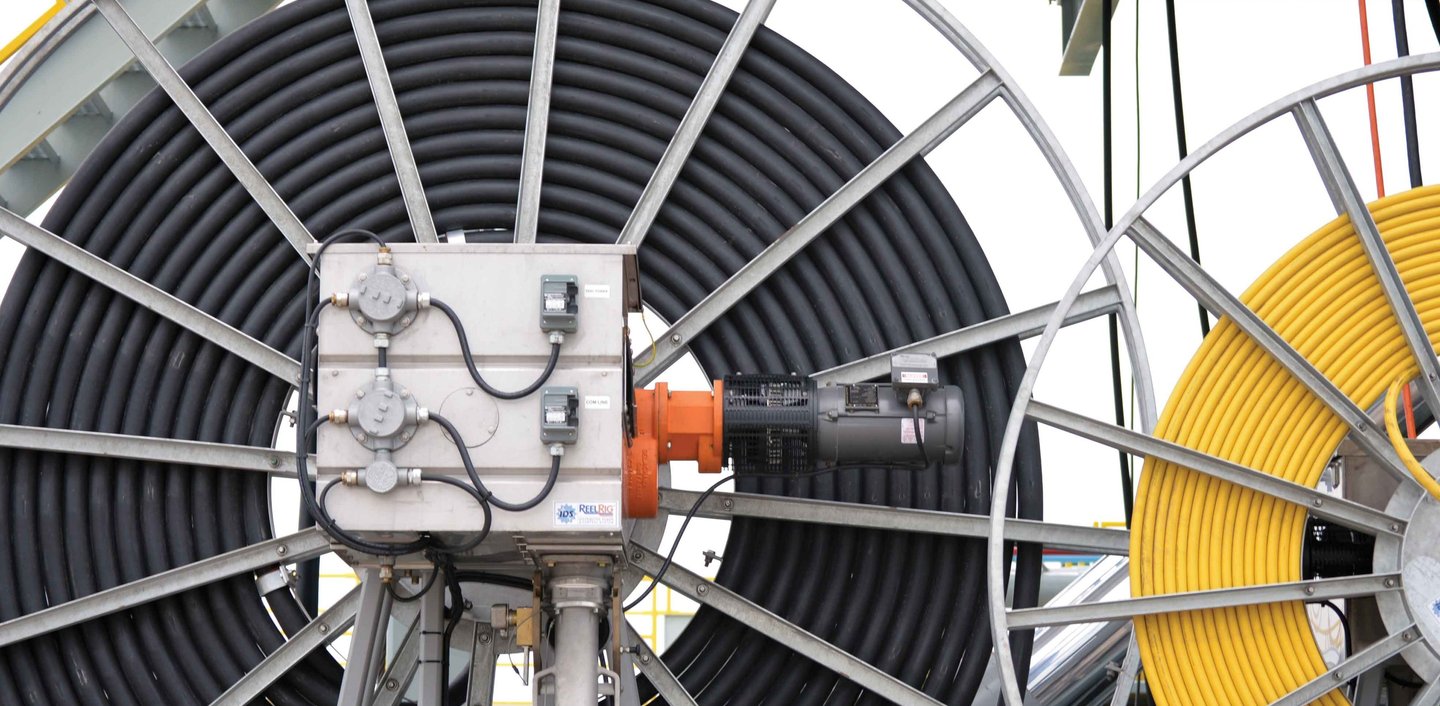

Advantages Over Conventional Round Cables
The flat design of the (N)TSFLCGEWOEU cable delivers significant advantages over conventional round cables in reeling applications. Better cable management on reels represents one of the most immediately apparent benefits, with the flat configuration allowing for more efficient winding patterns that reduce stress concentrations and improve overall cable longevity.
Enhanced signal integrity for control and data transmission results from the flat cable's superior electromagnetic characteristics. The controlled spacing between conductors and the flat geometry provide better impedance control and reduced crosstalk compared to round cable configurations. This improvement is particularly important for the high-performance reeling cable for Australian port terminals, where data integrity is crucial for automated systems.
Lower torsion stress represents another significant advantage of the flat design. Traditional round cables experience significant twisting forces during reeling operations, leading to conductor fatigue and potential failure. The flat configuration distributes these forces more evenly, reducing stress concentrations and extending cable life in demanding applications.
The space-saving flat design provides practical benefits in equipment installations where cable routing space is limited. Port equipment often operates in confined spaces where cable management can be challenging, making the flat profile particularly advantageous. This characteristic also simplifies maintenance procedures and reduces the risk of cable damage during routine operations.
The rugged port cable with signal transmission capabilities offers superior performance characteristics that directly translate to reduced operational costs and improved equipment reliability. The combination of enhanced mechanical properties with integrated data transmission creates a solution that addresses the evolving needs of modern port automation systems.
Installation and Maintenance Considerations
Proper installation of the (N)TSFLCGEWOEU cable requires careful attention to reeling system design and cable handling procedures. The flat configuration demands specific reel dimensions and winding patterns to achieve optimal performance, making it essential to work with experienced installers familiar with this cable type.
The cable's flexibility characteristics must be considered during installation planning, ensuring that minimum bend radii are maintained throughout the cable run. This is particularly important at connection points and reel interfaces, where improper installation can compromise the cable's long-term performance.
Maintenance procedures for flat reeling cables differ from those required for conventional round cables. Regular inspection of the cable's flat profile helps identify potential issues before they become critical, whilst the improved winding characteristics reduce the frequency of maintenance interventions compared to round cable installations.
The integrated data transmission elements require specific testing procedures to ensure continued performance throughout the cable's operational life. Regular signal integrity testing helps identify potential issues with data transmission whilst the cable continues to provide reliable power delivery.
Cost-Effectiveness and Return on Investment
The initial investment in (N)TSFLCGEWOEU cable technology delivers significant long-term benefits through reduced maintenance requirements and improved equipment reliability. The flat design's superior winding characteristics extend cable life compared to conventional round cables, reducing replacement frequency and associated downtime costs.
The integrated data transmission capability eliminates the need for separate data cable installations, reducing both material costs and installation complexity. This integration also simplifies maintenance procedures and reduces the risk of system failures caused by multiple cable installations.
Port operators consistently report improved operational efficiency when upgrading to flat reeling cable systems. The enhanced reliability and reduced maintenance requirements translate directly to increased equipment availability and reduced operational costs over the cable's service life.
The compliance with AS/NZS 2802 standards provides additional value through reduced regulatory compliance costs and improved safety performance. The certification process ensures that the cable meets all Australian requirements, eliminating potential issues with regulatory authorities.
Future Trends and Technology Integration
The evolution of port automation continues to drive demand for advanced cable solutions that can support increasingly sophisticated equipment requirements. The (N)TSFLCGEWOEU cable's integrated data transmission capability positions it well for future technology integration, including advanced sensor systems and real-time monitoring capabilities.
Emerging trends in port automation, including artificial intelligence and machine learning applications, require reliable data transmission infrastructure that can support high-speed communications. The cable's data transmission elements provide the foundation for these advanced applications whilst maintaining the robust power delivery characteristics essential for mechanical equipment.
The increasing emphasis on environmental sustainability in port operations aligns well with the cable's durable construction and extended service life. The reduced maintenance requirements and improved reliability contribute to more sustainable port operations through reduced resource consumption and waste generation.
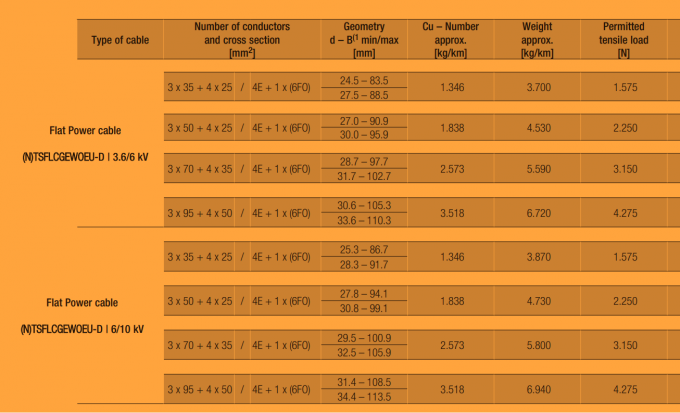


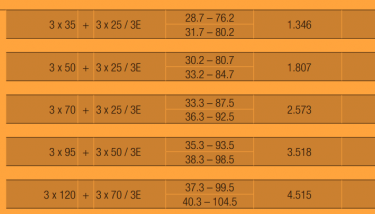
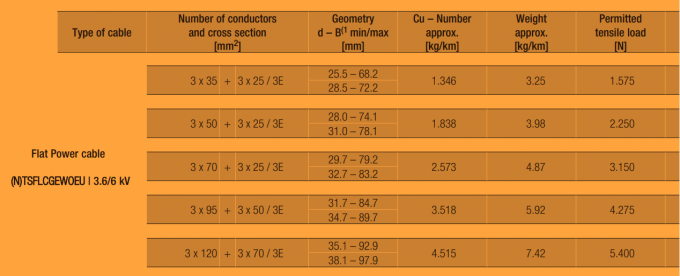


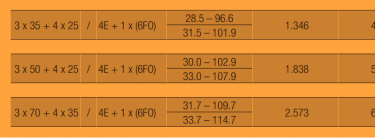
Frequently Asked Questions
What is (N)TSFLCGEWOEU cable used for?
The (N)TSFLCGEWOEU cable is specifically designed for mobile port equipment requiring both power and data transmission capabilities. It's primarily used in stacker and reclaimer machines, ship loaders, mobile conveyor systems, and container terminal automation equipment. The cable's flat design makes it ideal for reeling applications where equipment must traverse long distances whilst maintaining continuous electrical and data connectivity.
Does the (N)TSFLCGEWOEU cable meet AS/NZS 2802?
Yes, the (N)TSFLCGEWOEU cable is fully compliant with AS/NZS 2802 standards for electric cables used in mining and general industrial applications. This compliance ensures that the cable meets all Australian regulatory requirements for port equipment installations, providing assurance of safety, reliability, and performance in demanding operational environments.
Can this cable support both power and data transmission?
Absolutely. The (N)TSFLCGEWOEU cable features an integrated design that includes three power cores for electrical supply, three control cores for equipment functions, and two dedicated data transmission elements. This configuration provides comprehensive connectivity for modern port equipment that requires both power delivery and real-time data communication capabilities.
What makes flat rubber reeling cables better for stacker/reclaimer use?
Flat rubber reeling cables offer several advantages for stacker and reclaimer applications. The flat design provides superior winding characteristics on reels, reducing torsion stress and extending cable life. The configuration also allows for better cable management in confined spaces and improved signal integrity for data transmission. Additionally, the flat profile distributes mechanical stresses more evenly during the continuous winding and unwinding cycles typical of stacker/reclaimer operations.
Summary & Why It's the Right Choice
The (N)TSFLCGEWOEU flexible flat rubber reeling cable represents the optimal solution for Australian port equipment requiring reliable power and data transmission capabilities. Its robust design, certified compliance with AS/NZS 2802 standards, and integrated data transmission capabilities make it the ideal choice for modern port automation systems.
The cable's flat configuration delivers superior performance characteristics compared to conventional round cables, including better winding properties, reduced torsion stress, and improved signal integrity. These advantages translate directly to reduced maintenance requirements, extended service life, and improved operational reliability for critical port equipment.
For Australian port operators seeking to optimise their equipment performance whilst meeting regulatory requirements, the (N)TSFLCGEWOEU cable provides a comprehensive solution that addresses both current needs and future expansion requirements. The mobile port equipment cable with power and data cores offers the versatility and reliability essential for maintaining competitive port operations in today's demanding logistics environment.
The investment in this advanced cable technology delivers measurable benefits through reduced downtime, lower maintenance costs, and improved equipment reliability. As Australian ports continue to evolve towards greater automation and efficiency, the (N)TSFLCGEWOEU cable provides the foundation for sustainable, high-performance operations that can adapt to changing technological requirements whilst maintaining the robust reliability demanded by coastal industrial environments.
How to Reach Us
Get in Touch
SiteMap
Product Catalogue
Reeling Cable
Festoon Cable
Shore Power Cable




Scan to add us on WeChat
